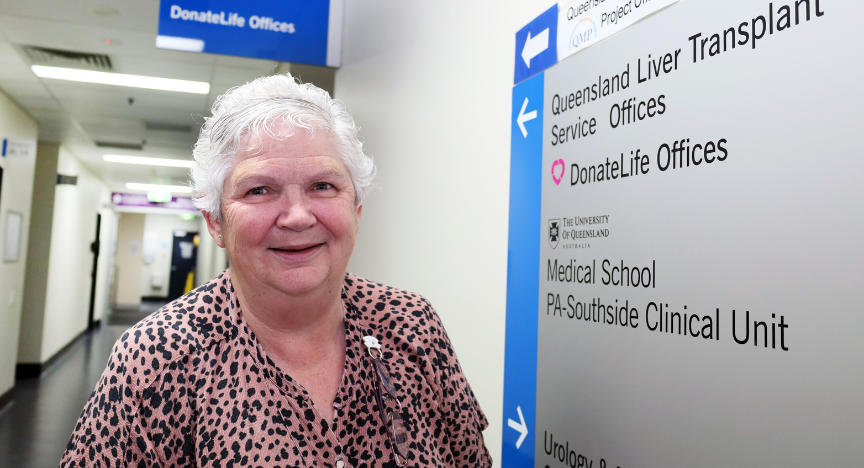
Clinical Nurse and Liver Transplant Recipient Coordinator, Sue Rixon found her career home in the Renal and Liver Transplant Unit in 1987 just after the first liver transplant was conducted in 1986.
Sue has been nursing for 50 years, completing her training at PA Hospital in the 70’s, commencing as a nurse in 1978 in orthopaedics and ophthalmology, before transitioning into kidney transplant, and then her new-found love of liver transplant.
“I always wanted to be a nurse from when I was little. As for my long service in transplant, it was just where I landed and I liked it – It’ been good to me,” Sue said of the pioneering team that conducted Australia’s first renal transplant, and first split-liver transplant and many other milestones in the specialty.
“Liver transplant is interesting, it’s surgical, it changes and advances, and of course liver is our unique thing at PA given we were the first transplant unit in Australia.”
She said it is the kind of specialty that people will stay working in for a long time creating a wonderful team environment with great surgeons, multiple professions, donor coordinators, and unique relationships with units across PAH – particularly radiology.
From her unique vantage within the specialty, the changes in liver transplant have seen it blossom from those pioneering years into the complex and sought-after specialty it is today.
“There have been many changes in training, equipment, and technique as well as medications that have improved measures over the years,” she said. “One thing that has remained the same is Professor Russell Strong’s pioneering Brisbane technique for splitting livers which is still used world-wide today to benefit more people from one donated liver.”
Liver transplant ICU stay is down from several days to usually less than 24 hours; hospital length of stay is now down to 10-14 days post-transplant; and what was a very complex and time-consuming operation is now just 4-10 hours.
As the first transplant unit in Australia, PA pioneered and participated in many medication trials which proved beneficial for patients using smaller doses to reduce the toxicity and side effects.
Sue’s role as a liver transplant recipient coordinator keeps her busy with both new patients and the follow-up care of all patients after liver transplant.
“There are three of us who do the role which involves assessment workup for patients referred from all over Queensland and Northern NSW to see if they are suitable for transplant. This involves a lot of blood tests and scans,” Sue said.
“We then look after them when they are waiting for transplant and then after they have had their transplant. They are connected with our service for life.”
“This is a hard journey for those patients and their families who need to be located within four hours of the hospital while they wait for ‘the call’ but hopefully there is a liver for them at the end of the wait so they can get better and back out enjoying life,” she said.
Sue is as delighted with her chosen profession of nursing and specialty of liver transplant today as she was when she commenced her career 50 years ago. “I still like the old hospital layout better than this one. It’s funny, I call it the new hospital but it has been here since 2000!”
Her time living-in as a trainee - which was mandatory without a note from your parents – and her early years at PA in the ‘old hospital’ all contribute to the reasons she has remained for so long in the profession she loves.
With 46 of her total 50 years as a nurse at PA Hospital, she truly is a fixture who will be missed when she does eventually cut the cord.